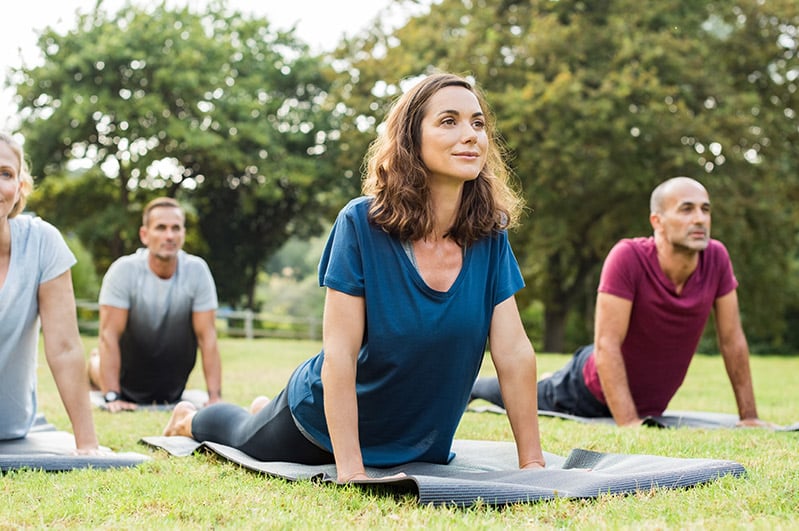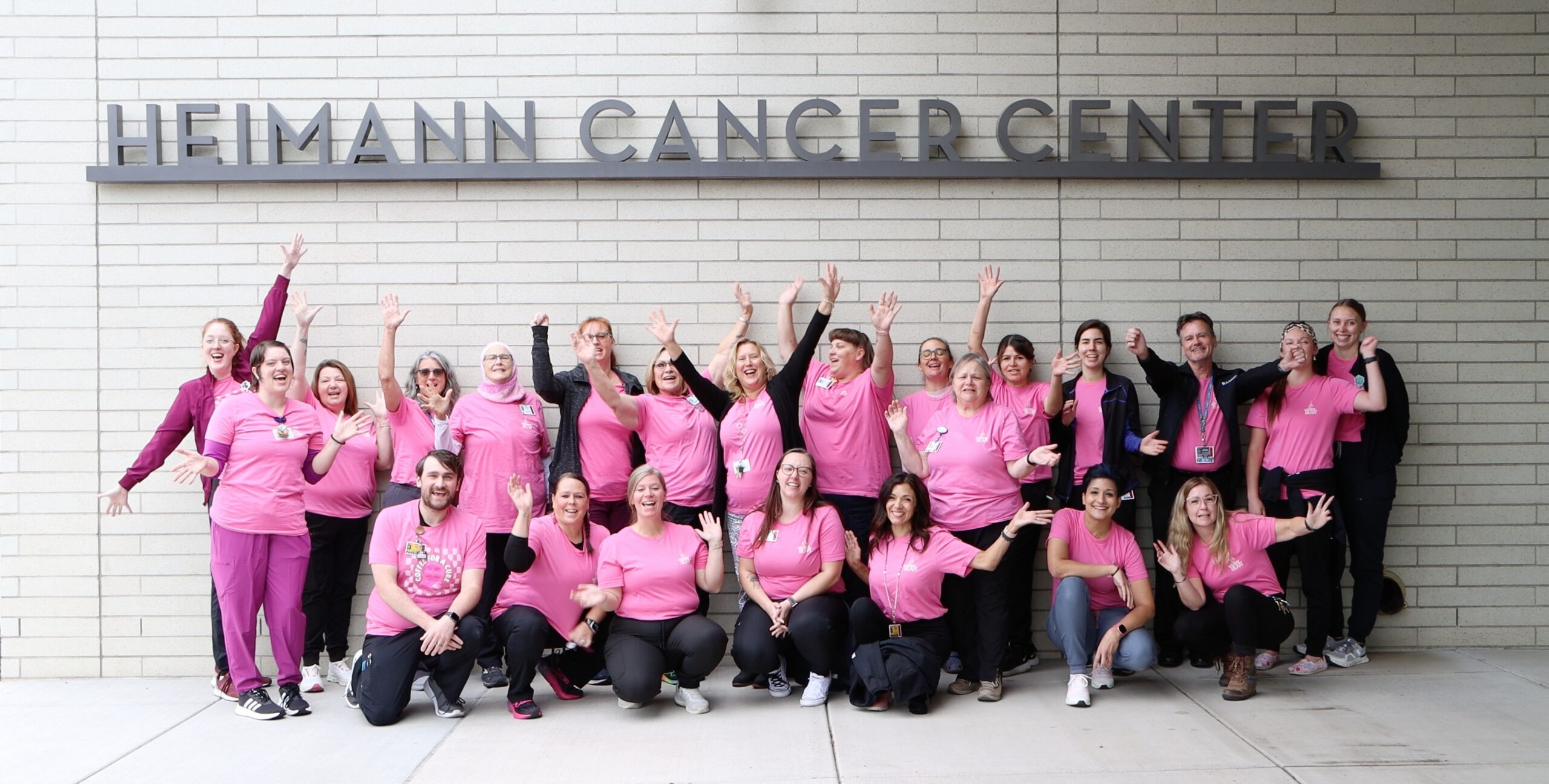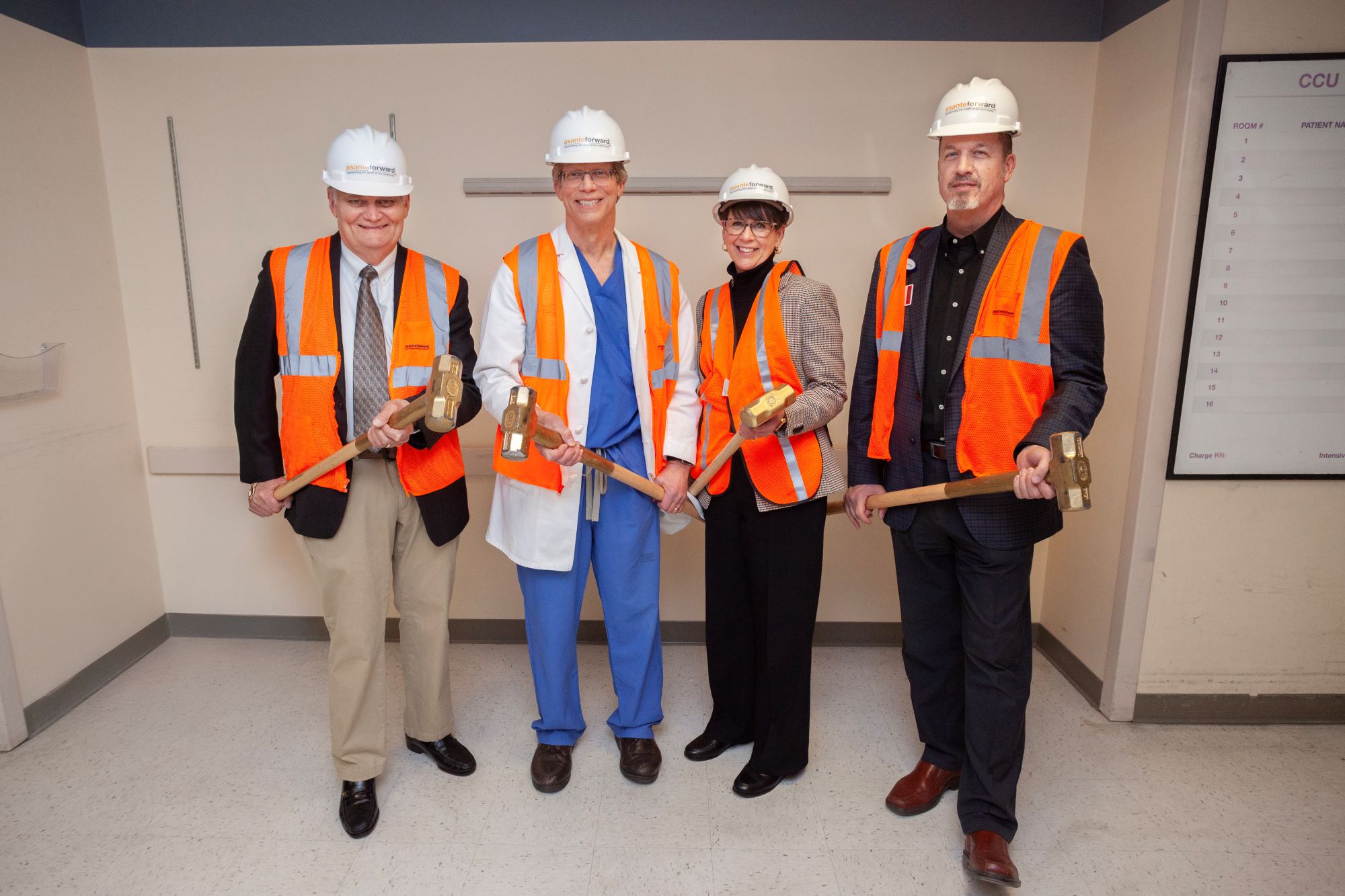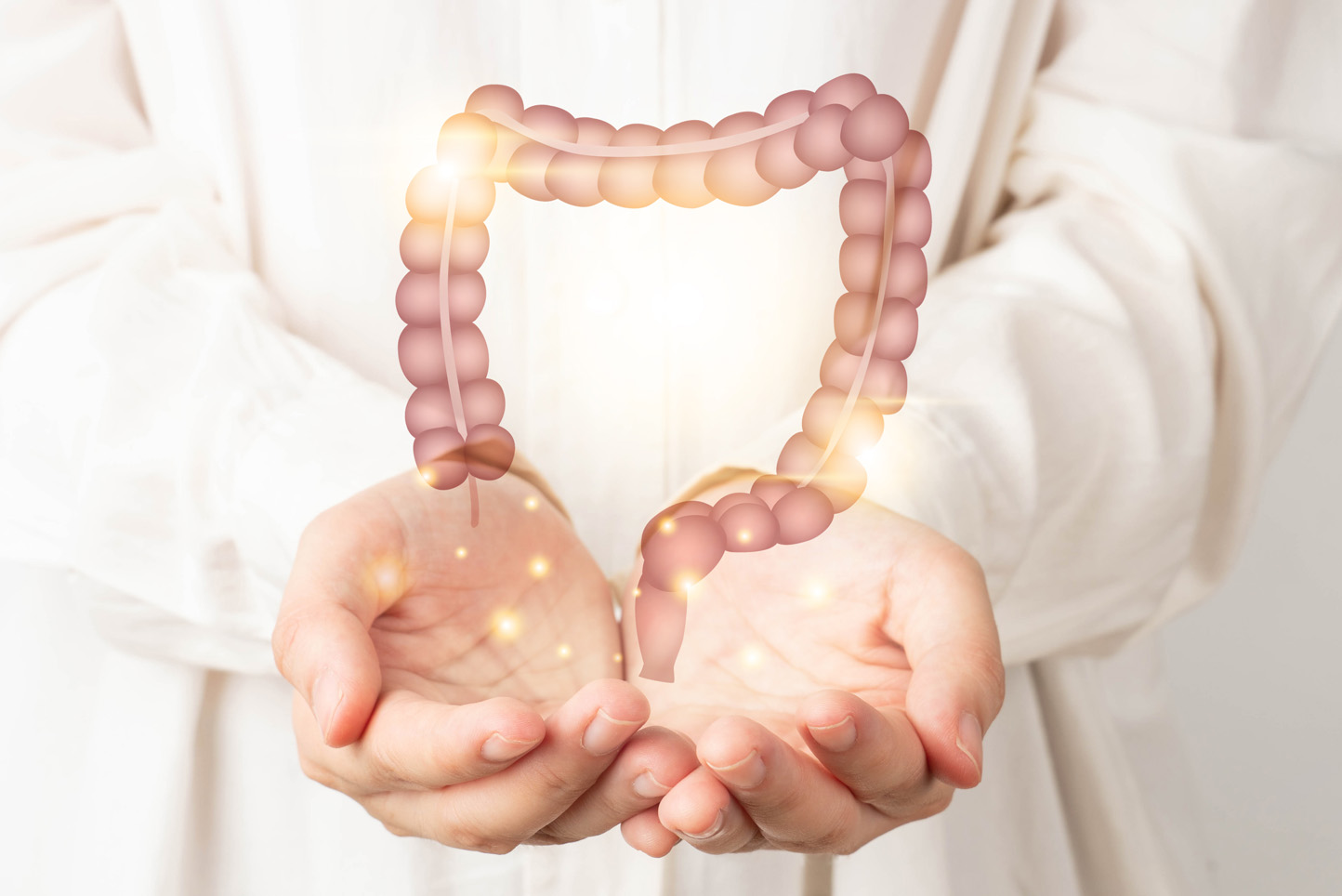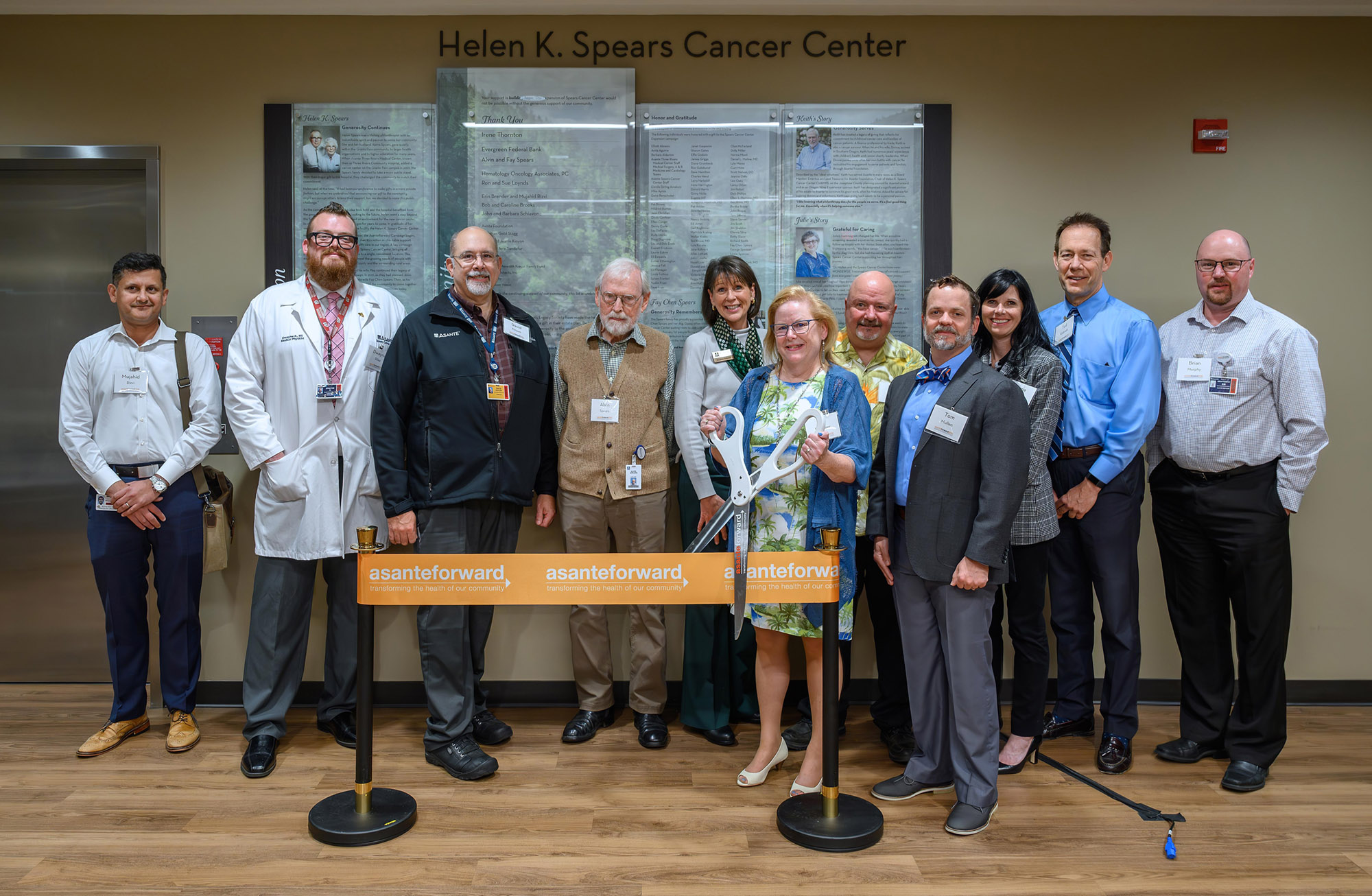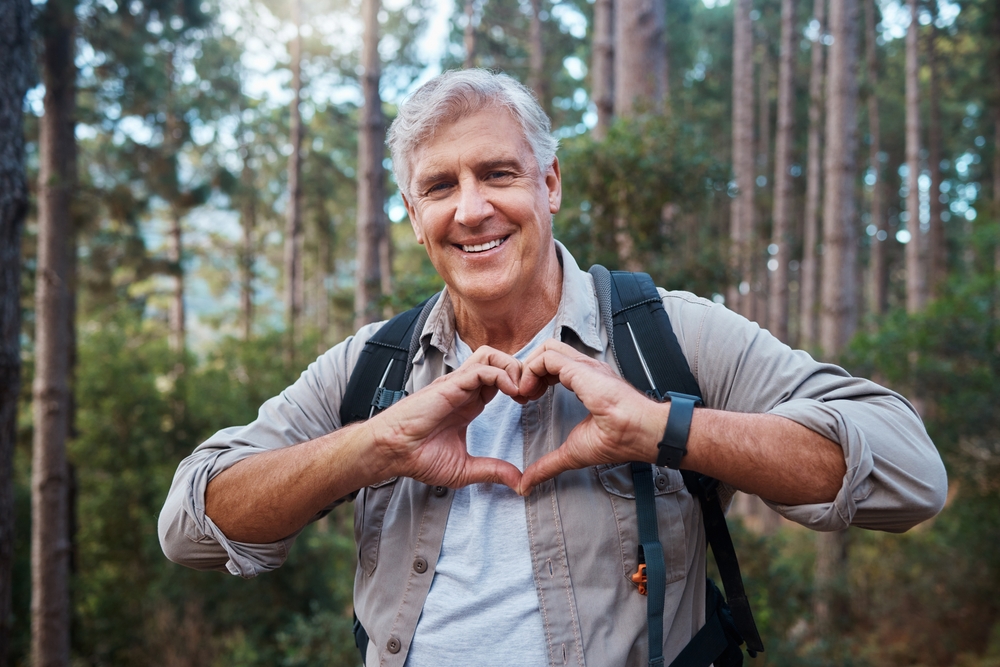Summary
In this weeks episode of Unlock movement with Asante, Dr. Kyle Rutledge emphasizes the important connection between movement and both mental and physical well-being. He notes that even moderate exercise can boost neurotransmitters such as serotonin and BDNF, which are crucial for mood and cognitive function. Dr. Rutledge's core message is that minor, consistent adjustments in your exercise routine can lead to noticeable improvements in your overall health.
Introduction
Welcome back to ‘Unlock Movement with Asante,’ a micro-podcast series curated to inspire and guide you in making movement an integral part of your everyday life.
Have you ever wondered how your daily jog or yoga session not only tones your body but also fortifies your mind? In our latest episode, Dr. Kyle Rutledge unpacks the symbiotic relationship between physical activity and mental well-being. He provides actionable insights into how minor adjustments in your exercise regimen can create ripple effects on your overall health.
As you take in this episode, remember that movement is more than just a physical endeavor; it’s an ongoing conversation with your mind. Intrigued by the possibilities? Let’s jump right in.
Subscribe
Unlock movement with Asante: episode 4 now available. Dive deeper into the science of physical well-being with Dr. Kyle Rutledge. If you missed Episode 3, featuring Health and Wellness coach Alisia Cook, it’s not too late to catch up. Don’t miss out on future episodes—be sure to subscribe.
Tessa Hulse
Hello, I’m Tessa Hulse.
Valencia Rollins
And I’m Valencia Rollins,
Valencia Rollins
Welcoming you to unlock movement with Asante.
Valencia Rollins
We’re on a mission to help you. Transition from a sedentary lifestyle to one more vibrant and full of movement.
Tessa Hulse
Whether you’re considering your first steps toward an active lifestyle or you’re looking for an extra spark of motivation, we’ve got you covered with tips, advice, and inspiring conversations with healthcare professionals. Welcome back to unlock movement with Asante. Today we’re joined by Dr. Kyle Rutledge, a well-respected psychiatrist at Asante in Medford, Oregon, who applies a comprehensive approach to mental health.
Valencia Rollins
When he’s not interacting with his patients. You can find Dr. Rutledge engaging in do it yourself home improvement projects, such as his five sided shed, cooking, and music.
Tessa Hulse
In this episode, we’ll delve into the fascinating connection between physical movement and mental health, exploring how sedentary lifestyles can impact our brains and overall well being.
Valencia Rollins
Plus, for those looking to incorporate more activity into their daily routines, Dr. Rutledge has some valuable insights that could ignite your journey towards a healthier lifestyle.
Tessa Hulse
Are you ready to unlock the secrets of mental wellness through movement?
Valencia Rollins
Then let’s dive in.
Tessa Hulse
Kyle, can you briefly explain the relationship between physical movement and mental health?
Kyle Rutledge
Sure. That’s hard to do briefly because there’s so much, but there’s kind of an old adage, what’s good for the heart is good for the brain. And anything that improves heart health means when that heart’s working better and your vasculature is working better, get more blood flow and oxygen to the brain, which is great for your brain cells, there’s less inflammation. Inflammation is bad for the brain. So doing little things to improve that with more physical movement can reduce the inflammation, which is harmful to the brain. And then also we know that physical activity and movement is going to release neurotransmitters, which are good and helpful, and other good stuff that just makes the brain healthier. So that’s on a biological level. But mental health, I mean, that also is the mind, and physical activity is just good for the mind too.
Tessa Hulse
Yeah, absolutely. And so on the flip side of that, keeping in mind a sedentary lifestyle, what kind of impacts does that have on our brain function and mental health?
Kyle Rutledge
Yes, it does. So if you look at just the symptoms of depression, like a depressive episode, either in major depressive disorder or otherwise, you can see things like isolation, they call it psychomotor slowing or sluggishness, low activity levels, low energy levels, changes to sleep and those sorts of things. And it’s actually a two way street where people can develop depression for whatever reason, and these things can come out. But also, if people are put in a position where they are unable to do things or they’re suddenly sedentary, then depression comes out, so they work together. It’s an unfortunate synergy between these two things where you can kind of fall in, and then it perpetuates the cycle so that’s kind of the depression side of things. But actually, also anxiety tends to go up with those sorts of things because more sedentary, although it can feel safe to kind of stay in one spot, you can also feel trapped when you stay in one spot. That increases anxiety just mentally. But also it’s pretty well understood that having the sensation where it’s difficult to catch your breath chronically, we usually think about it in terms of asthma, but it can also just be you’re not in very good shape, having a hard time catching your breath actually increases the propensity.
Kyle Rutledge
You have to feel panic and anxiety, like high levels of anxiety. So being sedentary makes that more likely to happen to you. So kind of just two immediate examples for me is that that can really increase your risk for things like depression and high levels of anxiety.
Tessa Hulse
That’s very interesting. I actually never knew that. So that’s really cool. Thank you for sharing that. So over all of your answers you’ve given, I’ve heard this similar notion that moving your body does have a significant link to our mental health. So could you clarify even further the concept that the human body is designed to move and what can happen to our mental health when it doesn’t?
Kyle Rutledge
Yeah, and kind of thinking how it’s designed, or maybe how it became to be designed. Thinking back, maybe an interpretation could be that we sort of evolved to move towards things that help us to survive, like food and shelter and away from things that can harm us, but along the way it’s become more than that, where the movement and the physical activity itself can actually be the thing that’s helping us. So a kind of common concept that I don’t know if maybe I’ll direct people to look it up themselves if they haven’t heard of it. It’s called Maslow’s Hierarchy of Needs. It’s kind of a fundamental psychological concept of things build on each other, where the very most fundamental are for safety and getting your needs met, which if the body isn’t moving, you’re not getting those needs met, sort of a thing. And then everything builds on top of that. But then, yeah, like we’ve been kind of saying that it becomes the physical activity itself and the movement itself is promoting the function of the whole body by just the act of the moving itself. Doesn’t matter where you’re going. Like being on a treadmill, going nowhere is still getting you somewhere.
Tessa Hulse
Yes, perfect. That’s something that we’ve really tried to reiterate to a lot of people is even just five minutes of intentional movement is still going to be beneficial to you in the long run than five minutes of just sitting on the couch. So I appreciate you reminding our listeners that just a little bit of time of movement on the treadmill, whether it feels significant to you or not, is still going to be helpful not only for our physical well-being, but also for our mental health too. I do have another question. Can you share a short anecdote where a change in physical activity level has significantly improved a patient’s mental health?
Kyle Rutledge
Yeah, I was thinking about I don’t really have one specific story, but I remember in medical school I spent some time at a chronic pain management clinic and people who have chronic pain feel and think about pain differently than people who don’t. And really being immersed in that was pretty eye opening and kind of getting to feel their perspective. And one of the things that came out through there was promoting movement. And it’s really easy with things like chronic pain or having any obstacle in your life, no matter what it is, focusing on that obstacle and thinking that’s going to keep me from moving, that’s going to keep me from doing the things I want to do. But what we were doing with the groups that I got to sit in and help with was instead of focusing on the movements you can’t do because of your pain or focusing on the obstacle that’s keeping you from doing the things that you think is your only option of movement, let’s look at the flip side of what you can actually do. So when someone had a particular movement where they would notice elicited pain, we would focus on all the other movements they could do instead.
Kyle Rutledge
And then we kind of referred to it as like wiggling it out, where the more you did the other movements, the easier the movement that they couldn’t do got. So then they were actually noticing improvement where that previous obstacle had been. That’s not really personal anecdote, but it seemed like a theme that was coming out.
Tessa Hulse
Yeah. No, I love that. So it’s really just kind of focusing on what our abilities are and not what our inabilities are. Right. So celebrating what we’re able to do and not focusing on the things that we’re unable to do. And I think that’s such an important note to take home for our listeners is that we are able to do so many awesome things. And so focusing on that, leaning into those positives is going to be really sustainable moving forward and it’s going to want to keep us continuing this movement in this forward trajectory that we’re on. So that’s really awesome. Thank you for sharing that. And so I know earlier you mentioned a little about neurotransmitters and so in the book Spark, the author discusses neurotransmitters as serotonin and brain derived neurotrophic factor that plays significant roles in maintaining our overall well being. Can you explain how physical activity influences these neurotransmitters and what these neurotransmitters do?
Kyle Rutledge
Yes, I will oversimplify partly because they do so much, we only pretend like we know everything they do. They do way more than we think they do. So I think a lot of times we think about exercise in terms of endorphins and like runners high, things like that, and tighten it to endorphins. But that’s just a tiny part of the picture. And endorphins actually are mainly through that opioid receptor. So pain receptors, so they kind of reduce pain when that’s their primary effect. Turns out that other neurotransmitters, we call them monoamines, the norepinephrine, serotonin and dopamine those also get boosted with exercise and then yeah, brain derived neurotrophic factor BDNF is really interesting. I think they’ve been learning more and more about it mainly in the last decade or two. And what those do, they actually have a cascade of effects in neurons where they can sort of one of their roles is strengthening the proteins that hold the neurons together. So it strengthens and neurons are brain cells and nerve cells, so they strengthen the brain cells themselves, their structure, they help them form synapses, which are the connections with the other brain cells, which is essential for learning and growing mentally and forming memories and things like that.
Kyle Rutledge
They also reduce what’s called apoptosis, which is when neurons and brain cells or any cell just dies, which is just part of its lifespan. It’s expected, it’s programmed, but it actually prolongs that, so it improves the longevity of neurons. So basically, it’s just all this good stuff, really good for brain cells. So what exercise and movement do is increases BDNF, which then has long term or downstream effects on increasing brain cells, and it boosts norepinephrine, serotonin and dopamine, which they’re all the ones, like I pointed out, that we focus on for mental health because they’re tied to things like depression, anxiety, PTSD, ADHD, all kinds of stuff. And what’s interesting is that medications we give for depression, anxiety, PTSD and all those work through enhancing the neurotransmitters that’s our understanding of their primary function is modulating serotonin in its effects, or Norepinephrine in its effects for the depression, anxiety, PTSD or Dopamine in its effects for ADHD and others. Also, more recent research has shown that these medications enhance BDNF effect and that might be why there’s such long term benefits that grow with time, with taking these medicines. So the effect that exercise is having is pretty much the same, if not better than the medicines we give.
Kyle Rutledge
So the medicines we give are working the same way that the exercise is helping on the microscopic level.
Tessa Hulse
Wow. So in a way, exercise is kind of like a natural medicine for our bodies.
Kyle Rutledge
Yes, with fewer side effects.
Tessa Hulse
Yes. And so I would just say, listeners, take that home, stew on it a little bit and get your body moving. If anything, it’s going to help release a lot of those great neurotransmitters that we just discussed. And so any kind of mood booster is a good one, I think. So we just hit science really hard on the head there. So, on a lighter note, what’s your favorite form of exercise and why and how does it help you personally?
Kyle Rutledge
Yes, I guess I have two different thoughts that come to mind with that. One is when I have time and can really dedicate myself to something, I like running because it’s really hard for me to do. There are people out there who are runners and it just comes easily for them but it’s always been something that I found is hard for me, just like body the way it works. But then I started doing it intentionally and realized I was getting better at it and being able to run farther and every time I did it I saw that I could go a little bit farther. And I also am pretty busy with work and family and everything. And I find that if I’m able to set up a boundary from that and kind of cluster time and actually be able to watch a show that I want to watch if I go on a treadmill and just kind of set something. Whereas the rest of the day I don’t get that chance. So it ends up being like me time and self-care time while I’m doing that, that’s when I can set aside time for it when I can’t.
Kyle Rutledge
And just because being busy, I just try to sneak it in during the day and it doesn’t feel like I’m actually doing it. But then kind of at the end of the week I might notice I’m doing better. So, like, walking around the hospital, avoiding the elevator and finding the stairwell instead, that ends up adding up in a way that surprised me when I started doing it intentionally, where I would notice that I was getting to the fifth floor or whatever. Kind of starting to feel pretty tired and winded. And then after doing it a couple of times, that was not a problem anymore. So I think that one of the things that I notice about myself and everybody’s different is I get excited about progress and noticing a change and stronger or less winded and I get excited about those things. So the theme for me personally seems to be recognizing growth but I know everybody’s different. So I think it’s important to find your own theme or what’s important to you and actually work backwards from there to see how exercise can push that.
Tessa Hulse
Yes, that’s amazing. And you actually mentioned a few things that we have discussed in prior podcasts. So one of those themes was habit stacking. And so I heard you say that you watch your favorite Netflix show when you’re on the treadmill, and that’s a form of me time. And so I appreciate you sharing that with us because that was just another theme or point that we are trying to drive home to our listeners too, is that habit stacking can make things a bit more enjoyable and you can kind of take care of two things at one time. So that’s really great to hear. And then I also love that you just gave yourself little mental challenges. So you said prior that you would take an elevator or you would try to take the stairs, but you weren’t able to make it to the fifth floor or the Eigth floor. And over time with continued efforts, you are getting there and you’re feeling awesome about it and it’s getting easier. So I think that’s really great and I think it’s another just really good takeaway for our listeners is to find little ways that you can challenge yourself, even if it’s just the smallest.
Tessa Hulse
I’m going to take the stairs today or I’m going to go up one floor and see how I feel. So that’s really great. All right. Awesome. And my next question is how can someone who has led a predominantly sedentary lifestyle begin to incorporate more movement into their daily routines in a way that is manageable and sustainable?
Kyle Rutledge
Yes. Let me preface my answer with easier said than done. And I want to acknowledge that it’s really hard to change a behavior or power through something that’s hard. I think a common obstacle is the mental sort of is one that’s placed mentally of kind of seeing an activity as being unmanageable and unsustainable or pointless or very difficult. So it could be someone who’s starting from nothing would kind of think, wow, it’d be really nice to run or really nice to go for a walk. But that’s just what they’re imagining with that is like walking miles or running miles, but that’s not how it goes. And one kind of thought is there are a lot of programs out there that are called couch to 5k. And if you look at those, it’s not you’re on the couch day one and you’re running the 5k day two. They spread it out for a long period of time and what they’re doing is doing small steps each way and increasing it a little by little until you get there. So that ends up being and I’m not saying you have to run a 5k and that’s not the exercise you’re looking for.
Kyle Rutledge
That’s just an example of how it has to be step wise. It has to be small and incremental. You’re not just going to go out there and do it the next day, especially if you’re starting from being sedentary. So we think about it as a 1% change or a very small change day to day and then that builds and you’re able to manage that. And there’s actually a whole branch of therapy called behavioral activation which is dedicated to things like this, where it’s kind of do the thing that makes you feel good or do the thing that makes you feel happy or do the thing that is where the obstacle is for you to power through. And another part of it is figure out where that motivation lies. So instead of fighting the motivation, you do the behavior and then the motivation comes later. So one of the ways that we do that also is if you think about just going for a walk around the block if that sounds like impossible for you. Well what does sound possible? And break that down into steps. So what does walking around the block involve? I’m sitting on the couch.
Kyle Rutledge
Well first of all I have to maybe put on the right clothes for it to go outside. Can I do that? Can I just commit to putting the clothes on? I’m not even going to commit to the rest of it. Let’s just see how that feels doing that. Okay, what’s the next step? Tying my shoes. Putting the shoes on and tying them. Can I commit to that step? And then sometimes when you’re doing that you just think, well this is silly, I’m just going to do the walk around the block so I don’t have to deal with this breaking things down into steps. But the more and more you break it down the easier and easier those parts along the way are and then you automatically are packaging it into very doable things and then you find that, oh, I actually ended up walking around the block and that’s great. So I’m saying it lots of different ways but it’s the same idea. Break it into small steps because those small steps are doable and the big thing that you’re thinking about doing is just a series of small steps anyways.
Tessa Hulse
Yeah, no that’s great. So small sustainable steps are going to be the best way to go about it. So we have a lot of listeners who do have that all or nothing mentality, and oftentimes we see burnout coming as a result of that because you go from being sedentary to then trying to run that 5k. Like you mentioned. And people realize, wow, this is a lot harder than I thought it was going to be. And I’m really sore on day one, or I pushed myself further than I’m comfortable with. So I love that you mentioned the small sustainable steps, even if it seems so far-fetched, this idea, right, of taking that walk around the block. I love that you’re even putting importance in the simple things like putting the shoes on, putting the clothes on, getting up off the couch. So that’s really awesome. And I always tell people keep it simple, right. The simpler we can keep it, the more freedom we have to expand on it further once we’re comfortable to do so. And I think you drove that home for us too and you touched on that as well. So that’s really great.
Tessa Hulse
If you could suggest one benefit of physical activity that has the most profound effect on mental health, what would that be and why.
Kyle Rutledge
Just one?
Tessa Hulse
I know it’s hard.
Kyle Rutledge
I think that if I had I’m going to pick one that is a, it actually is a lot but call it self-care. I think that’s the one benefit is that you’re taking care of yourself. It’s for you. And if you are spending so much time, you’re taking care of other people, or you’re spending a lot of time being for others or being in service or just otherwise not having time to take care of yourself, whatever the reason is, this is entirely for you. And all of the benefits that we’ve talked about are for you. And if that feels selfish to take time for self-care, you’re going to be a better version of yourself for everyone around you anyways. So you can swing it mentally as actually this is for everyone else, but it’s secretly for you, and it’s self-care.
Tessa Hulse
Yes. I love that. So one thing that we challenged our listeners with a few podcast episodes ago was to identify your why, your reason, your kind of motivating factor. And so I’m sure some people struggled with that. I know I have a hard time identifying why. Well, because I’m told to why, because I should. But I think that why could be for me, me could be the why. And I think that’s really great. And it’s hard to remind ourselves that we do need self-care time and we do need to prioritize our own mental health and physical well-being. And if you can do both of those at the same time through exercise, why wouldn’t you? So, I think I’m going to change my why to make it for me. I’m doing it for me. So, thank you for that. I think that’s a really good point to just remind our listeners that even if it feels selfish, it’s going to be better for you in the long run, and it’s going to be better for your loved ones and everyone that you’re around in that process, too. All right, so finally, we’re at our last question here in southern Oregon.
Tessa Hulse
We are surrounded by stunning scenery. Do you recommend any activities our listeners can engage in here locally?
Kyle Rutledge
Yeah, getting outside is great. Of course, it would depend on the time of year, what sort of view you’re going to get, but I’ve lived in flat places with no views, and I am constantly reminded when I’m outside of how pleasant and nice and beautiful this place is. So it’s kind of almost no matter what side of the valley you happen to be on or whether you’re at the bottom of it, you can look out and see a lot all around you, and that is just really nice. So anyways, getting out and walking, if you small, short walks, you always are pretty much always going to have a view, which you can’t get everywhere. If you’re into longer walks or if you are trying to set a goal for yourself, you don’t have to go far to walk around Roxy Ann Peak or Table Rock and things like.
Kyle Rutledge
I know my family during the summertime likes going to Daniel Meyer pool for swim lessons and free swim and those sorts of things, but I know that there’s a whole bunch of stuff around here that we haven’t tapped into yet as well.
Tessa Hulse
Yes, we are so fortunate with the views that we do have here. We’re surrounded by really great mountains and awesome rivers and lakes and just a multitude of different environments that surround this valley. So that’s such a good point that we can just take a step outside and be surrounded by a picturesque view. All right, Kyle. Well, we so appreciate you joining us on this podcast today. You brought up so many amazing points, and I think one of the takeaways that we can have from this is that moving your body is going to improve your mental health, and there’s a lot of science behind that. You touched on that, and so thank you. Thank you for doing that. We so appreciate having you here.
Kyle Rutledge
Yeah, thank you for including me. I appreciated it.
Valencia Rollins
Wow. Tessa I love today’s episode with Dr. Rutledge. It was very powerful. I thought it was thought provoking, and he gave our listeners some clear insight and understanding into the mental benefits of intentional movement.
Tessa Hulse
Yes, absolutely. He touched on so many great points. And I think a lot of times we forget when we’re starting these new routines, that our mental health is still really important factor. And so we get so streamlined in just focusing on the physical aspect of it that we don’t take the time to appreciate what it’s really doing for our mental health.
Valencia Rollins
Absolutely, I agree. And that reminds me of one of the points he made with exercise, and it can act like a natural form of medicine, releasing those feel good neurotransmitters in the brain and ultimately keeping symptoms such as anxiety or even depression at bay.
Tessa Hulse
Yes. That’s such a good point too. And we also just want to remind our listeners to be sure to reach out to your primary care physician before making any significant changes to your current routine and activity levels. I know that we discussed a lot that getting body movement in can definitely increase your mood and can boost your mental health in that process, but definitely stick to the care plan that you’ve already established with your primary care physician before you make any drastic changes and be sure to consult with them first too.
Valencia Rollins
Absolutely. Great point there, Tessa. We definitely want our listeners to be safe and get counsel from their primary care team. Absolutely. I do want to touch on real quick some of the things I heard echo like from some of our previous podcasts is finding that why or what’s important to you taking those small incremental steps. He also touched on habit stacking. He didn’t say it habit stacking at first, but we know that with our previous podcast he incorporated running, which he really didn’t care for with watching his favorite Netflix show. I thought that was a great illustration there to share with our listeners and then finally recognizing the growth and progress with those small incremental steps that our listeners can take.
Tessa Hulse
Yes, absolutely. A lot of people refer to those as non-skill victories. So being able to identify what that looks like for you and your own mental health too, just be conscientious of how you’re feeling going into these new routines and how you’re feeling throughout this time when you’re making progress. It can be as simple as waking up with a little more energy throughout the day or overall, your mood just being improved. So, I want to challenge our listeners now that we’re making these changes and we’re moving our bodies more. Just take a little time, either at the beginning or end of your day, maybe even five minutes, to write down how you’re feeling, how you’re feeling mentally, how your body’s feeling, and then celebrate that progress as we continue through here.
Valencia Rollins
Absolutely. Wonderful challenge for the week. I think I’m going to do this myself, Tessa. Thank you.
Tessa Hulse
Yeah, of course. I think it’s just important that we are mindful throughout this process that we do these little mental check ins with ourselves too. Lastly, I know that we did discuss a lot about mental health throughout this podcast and the benefits of moving our body to our mental health. And so we just want to reiterate to all of our listeners out there that if you do find yourself going through mental crisis, be sure to contact your peer team or call or text 988 for confidential support.
Valencia Rollins
Absolutely. And I think that wraps up our time today. Tessa, thank you so much. Know, being here today, us having this conversation around intentional movement and the mental benefits definitely left me with some thought provoking things that I can implement along with our challenge. And thank you to our listeners. We hope that this podcast will inspire you to get moving and being intentional in your movement, finding something that works for you and then celebrating those small successes. Thank you so much for joining and we will see you next time.
Tessa Hulse
Yes. Thank you, Valencia.

